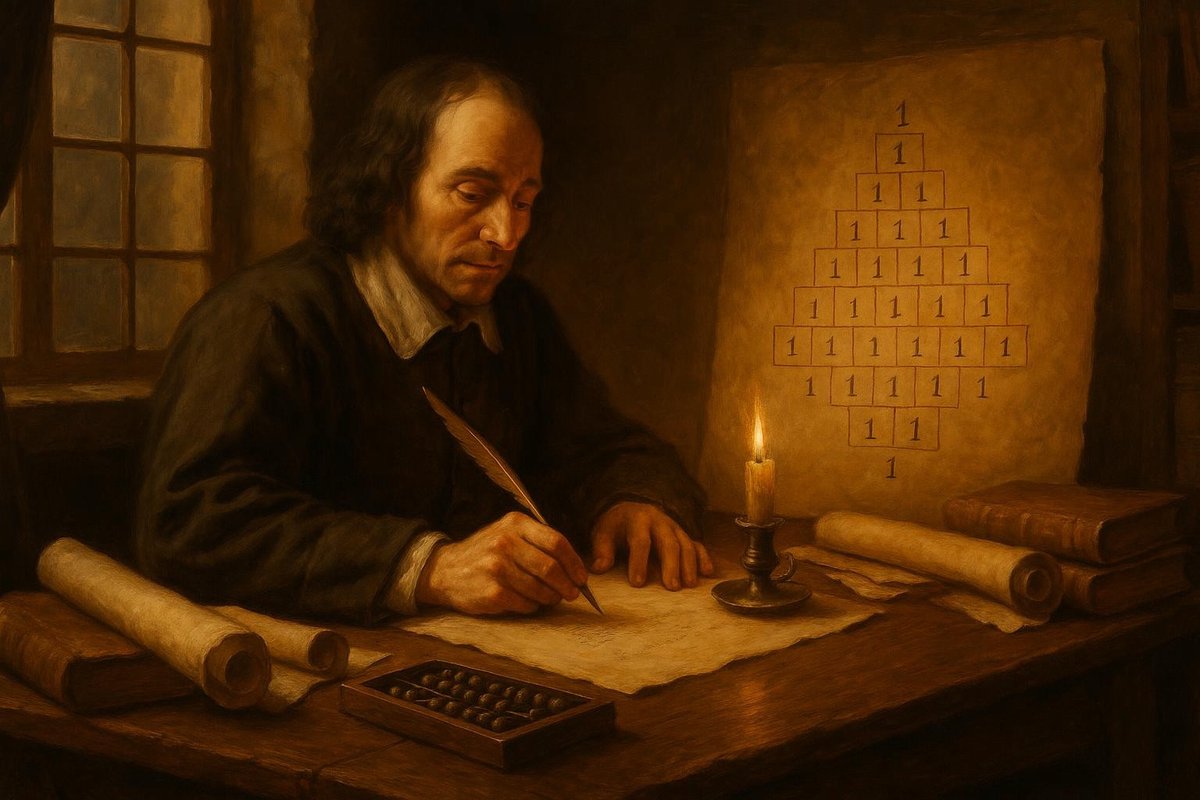
Have you ever wondered how a simple question could spark a mathematical revolution? The story of Pascal’s Triangle is precisely such a tale, where a seemingly straightforward inquiry blossomed into a cornerstone of modern combinatorics. It’s an inspiring narrative of curiosity leading to groundbreaking insights!
The Origin of Pascal’s Triangle: A Simple Start
Long before Blaise Pascal’s name became synonymous with the triangular array of numbers, the concept was already taking root. In ancient China, as early as 200 BC, mathematicians like Jia Xian were exploring binomial coefficients, which would later form the backbone of Pascal’s Triangle. Interestingly, they were driven by a simple desire: to efficiently compute combinations, like choosing r items from n possibilities.
- Imagine wanting to know how many ways you could pick a team from a large group of players; this was the kind of problem that inspired these early scholars.
- Their work laid the groundwork for what would become an indispensable tool in mathematics.
As time went on, this triangular pattern appeared in other cultures, each adding their own insights to the growing body of knowledge. The mathematical landscape was ripe for a grand unification of these ideas, waiting for a figure like Pascal to bring it all together.
Key Figures in the Development of Pascal’s Triangle
Blaise Pascal, a 17th-century French mathematician, was not the first to discover what we now call Pascal’s Triangle, but his work was pivotal in popularizing it. He built upon the ideas of earlier scholars and refined them into a cohesive theory. Pascal’s work, published in 1654, framed the triangle in connection with probability theory and binomial expansions, solidifying its status in mathematics.
- Pascal was not alone; other great minds like Pierre de Fermat were also intrigued by the triangle’s combinatorial properties.
- In fact, the correspondence between Pascal and Fermat laid the foundation for modern probability theory.
These exchanges were not just academic; they were part of the vibrant intellectual community of their time. Mathematics was becoming a language shared across borders, fostering collaboration and creativity. This was the fertile ground from which Pascal’s Triangle truly blossomed.
The Turning Point: From Simplicity to Complexity
The real turning point for Pascal’s Triangle came when mathematicians began to see its applications extend beyond simple arithmetic. As they explored deeper patterns within the triangle, they unearthed connections to algebra, calculus, and even number theory. What started as a simple tool for counting possibilities revealed layers of complexity.
- One of the most fascinating aspects was the triangle’s ability to generate Fibonacci numbers, a sequence found in nature’s very fabric.
- This intersection of simplicity and complexity is what makes Pascal’s Triangle a truly elegant piece of mathematics.
Of course, the triangle also found its way into the hearts of teachers and students, as it offered an intuitive way to understand combinatorial problems. The ability to visualize mathematical concepts helped demystify them, turning abstract ideas into something tangible and approachable.
The Impact on the World: A Legacy of Learning
Pascal’s Triangle has left an indelible mark on mathematics and beyond. Today, it continues to inspire new generations of mathematicians, serving as a gateway to understanding more advanced concepts. Its influence stretches into fields like computer science, statistics, and even art, demonstrating its versatility and timelessness.
- In classrooms around the world, students use the triangle to explore probability and algebra, often as their first step into higher mathematics.
- Researchers use it to model complex systems, showcasing its ongoing relevance in cutting-edge science.
As we look to the future, Pascal’s Triangle remains a testament to the power of simple questions to unlock profound truths. It serves as a reminder that curiosity, when pursued with passion and rigor, can transform our understanding of the world.
Fuel Someone Else’s Curiosity
If this story of mathematical discovery sparked your curiosity, why not share it with a friend or a fellow math enthusiast? Delve into the rich history of ideas, and perhaps you’ll find inspiration for your own intellectual journey. After all, every great discovery starts with a simple question.

Leave a Reply